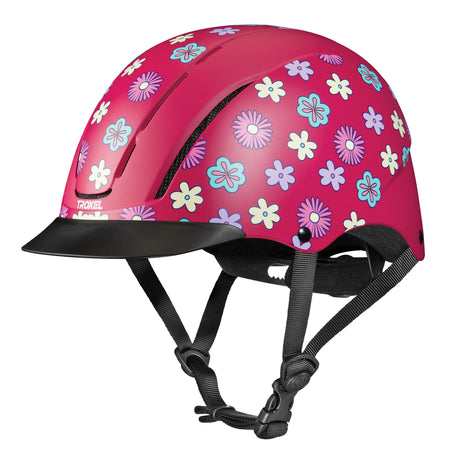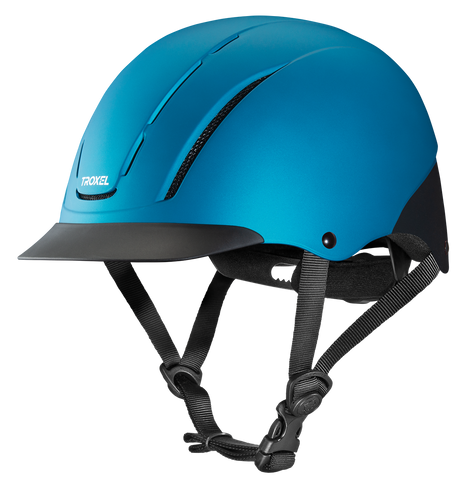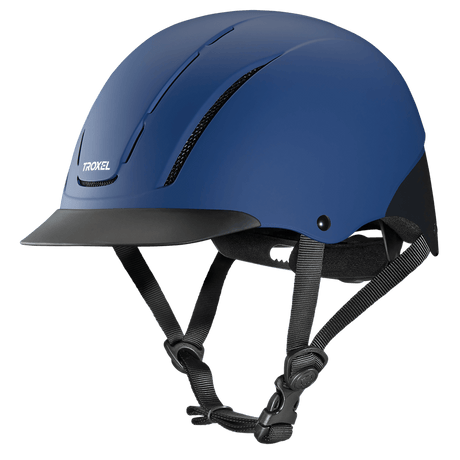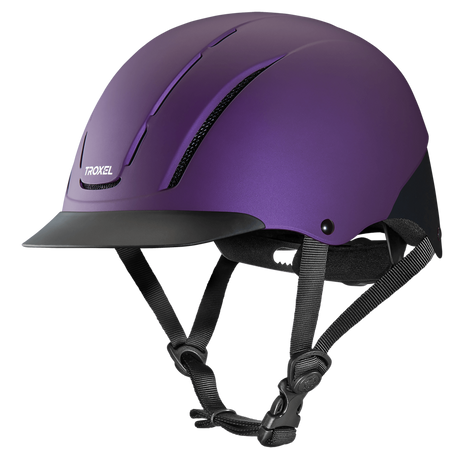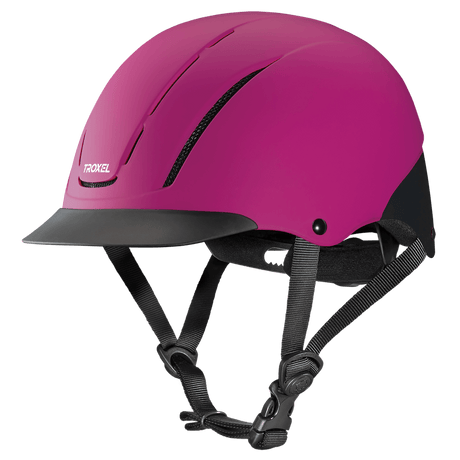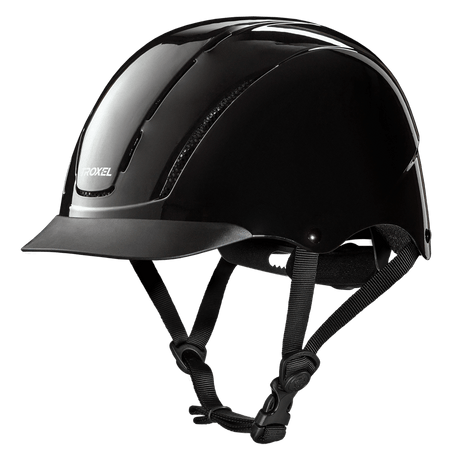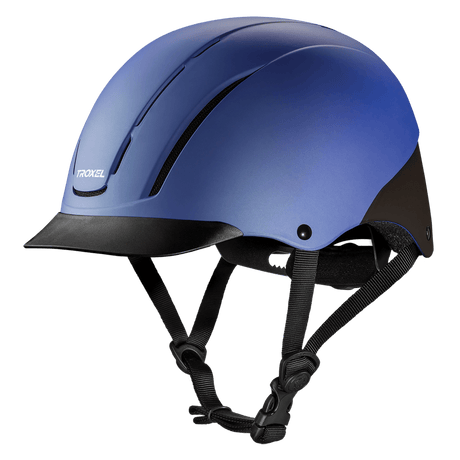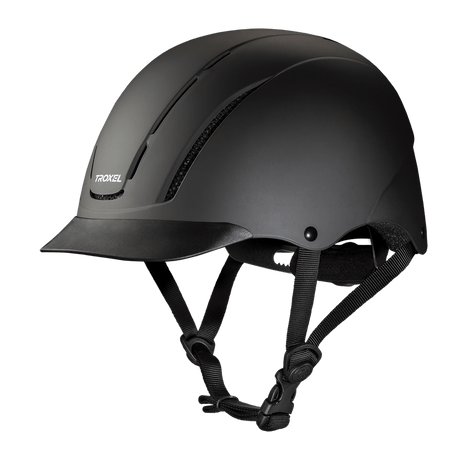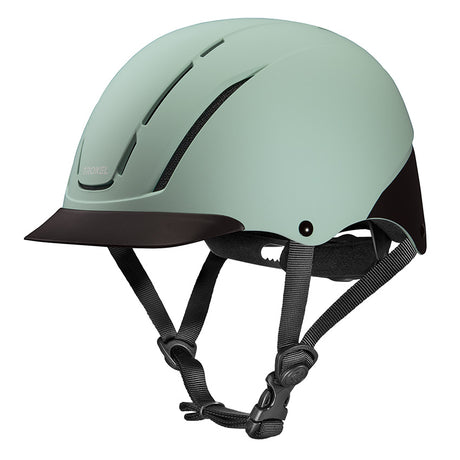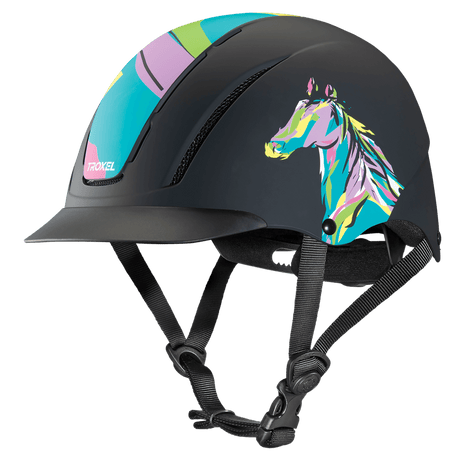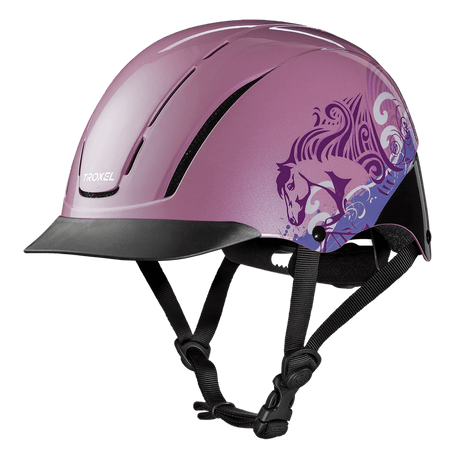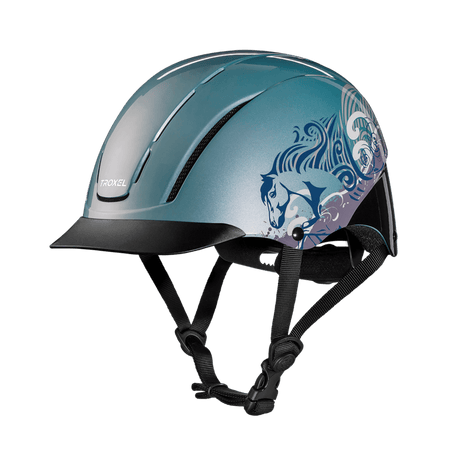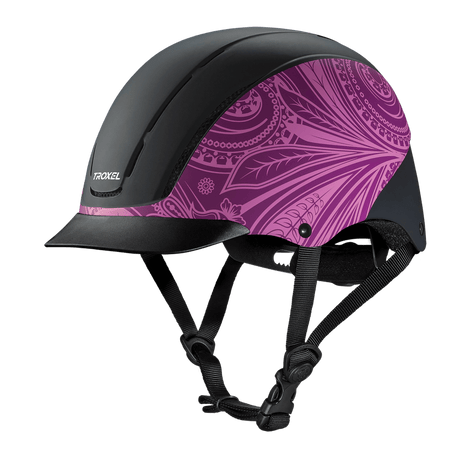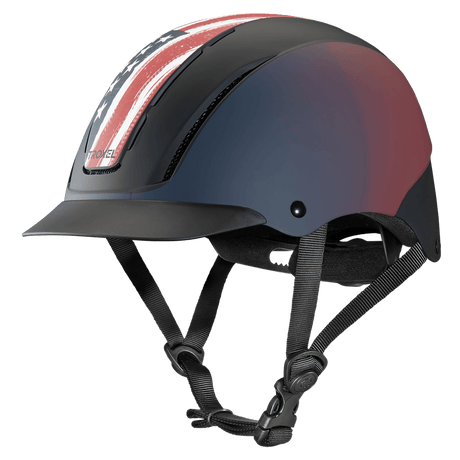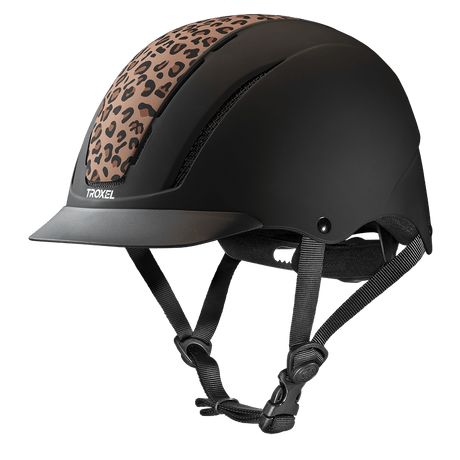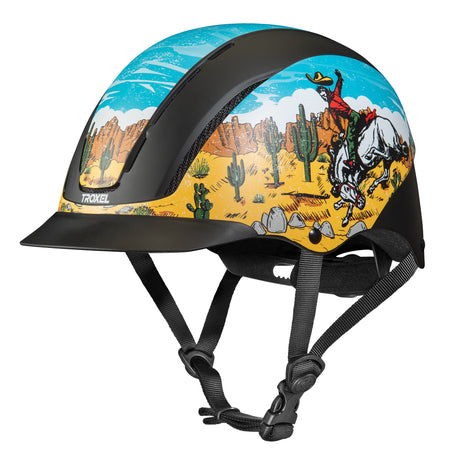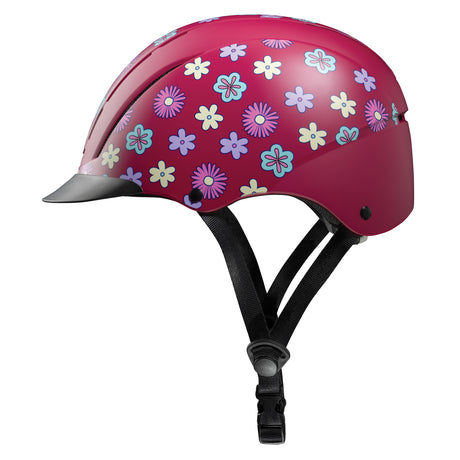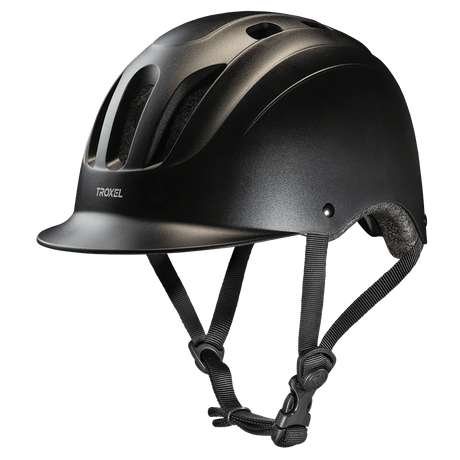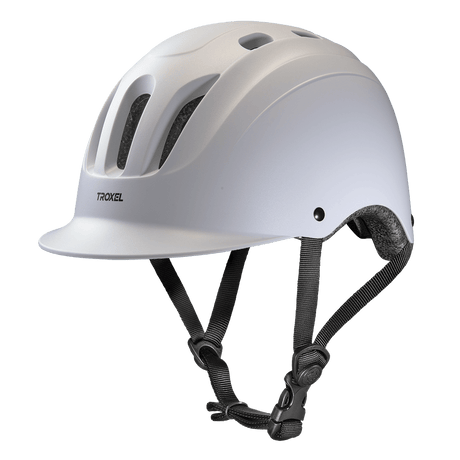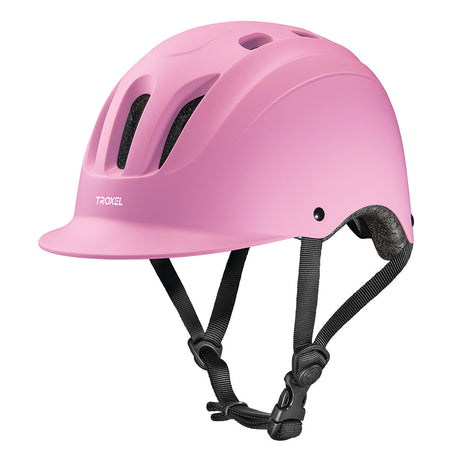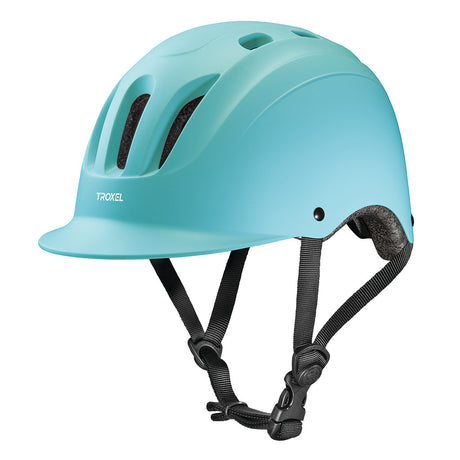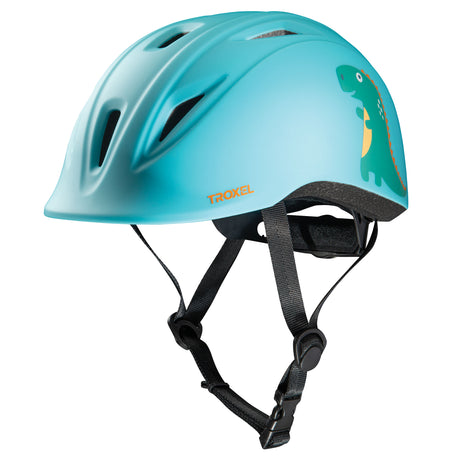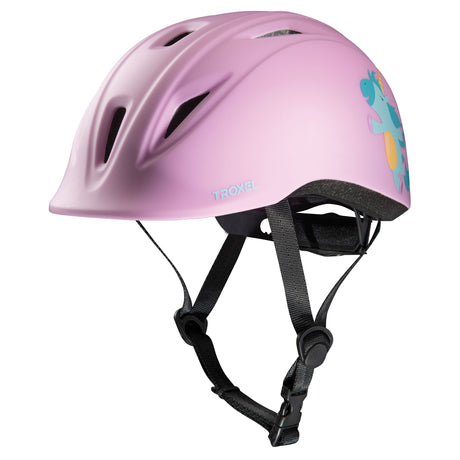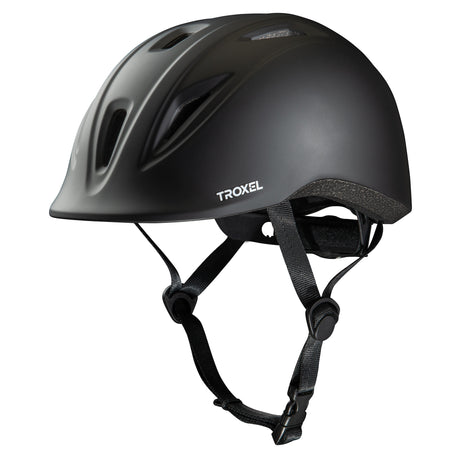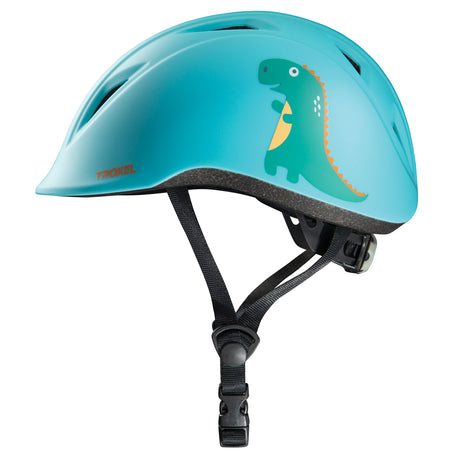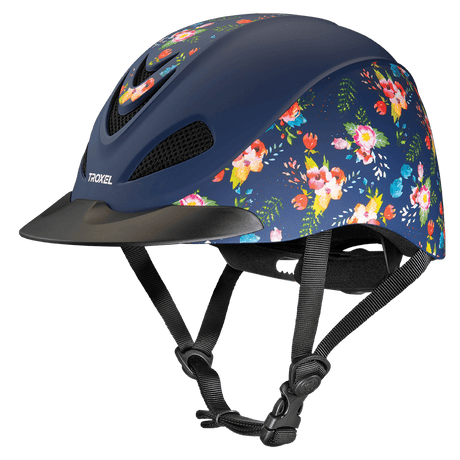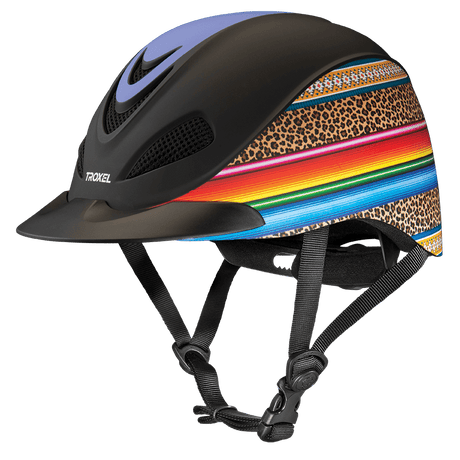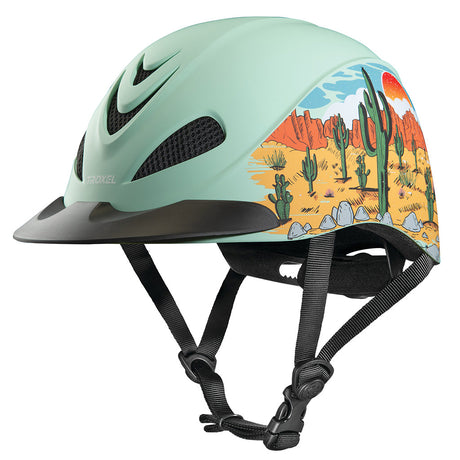Troxel Kids Helmet Guide
The Troxel Kids Helmet Guide will help you to navigate the process of selecting a helmet that is best suited for your young rider.
-

STEP 1: Measure
Use a measuring tape to measure around the child’s head one inch above their eyebrows. Or use a string to measure and then lay it out and measure the length of the string.
STEP 2: Choose Size
Use the chart to convert measurement to hat size
STEP 3: Review Kids Helmet Styles
Now that you have a size measurement, you can review the various helmet styles. Most Troxel helmet styles come in XS and S sizes that will fit young riders. You can view the full selection of available styles and review the specific model sizing information to see if the model comes in a size range that would be a good potential fit for your young rider.
The three most popular all-purpose riding helmets for kids are the Spirit, Dynasty and Sport 2.0 helmet models.
SPIRIT™
The Spirit offers a deeper full coverage fit for incredible comfort and security. The DialFit™ system makes comfort adjustment quick when little heads grow or hair styles change. The XS size was specifically designed to fit young rider’s heads well. The inside shape of the Spirit will fit both round to long oval shaped heads with the use of the FlipFold™ tabs in the removable and washable helmet liner.
Spirit Sizes: XS (6 ¼ - 6 ½), S (6 ½ - 6 ⅞), M (7 – 7 ⅜), L (7 ⅜ – 7 ¾)
DYNASTY™
Take a ride on the wild side! The Dynasty™ helmet fuses fashionable graphics with an ultralight low profile design. With large vents providing airflow and a DialFit™ comfort system, this helmet provides unmatched levels of comfort for riders. The Dynasty's trendy designs transform an equestrian helmet into a fashion statement.
Dynasty Sizes: XS (6 ¼ - 6 ½), S (6 ⅝ - 7), M (7 – 7 ¼), L (7 ¼ – 7 ⅜)
SPORT 2.0™
The popular Sport helmet just got better with the 2.0’s upgrades, including a sturdy injection molded shell, a new matte finish and a sleek integrated visor. Now in XS to XL, this helmet has an improved fit, with larger vents for more airflow, offering comfort and performance at a great price.
Sizes: XS (6 ¼ - 6 ½), S (6 ⅝ – 6 ⅞), M (7 – 7 ¼), L (7 ¼ – 7 ½), XL (7 ⅝ – 7 ⅞)
STEP 4: Helmet Fit
Now that you have selected a helmet, it's time to properly fit it:
Achieving the proper helmet fit is important for a helmet to be able to do it’s job. Don’t make a purchase thinking, “They’ll grow into it.” Purchase a helmet that fits properly now, not a loose-fitting one.
-
 Open the DialFit™ if the helmet comes with this feature.
Open the DialFit™ if the helmet comes with this feature. - Put the helmet on the child’s head. It should fit snug but not be uncomfortable.
-
 Adjust the inner padding as needed by folding under the FlipFold™ tabs for more or less cushion or by inserting the shim pads of the Sport model.
Adjust the inner padding as needed by folding under the FlipFold™ tabs for more or less cushion or by inserting the shim pads of the Sport model. - Next adjust the slide glides on the retention straps to sit underneath the child’s ears to form a “V“.
- Adjust the length of the retention system straps to fit snug under the child’s jaw and use the o-rings to secure the excess. Only 1-2 fingers should be able to fit between the retention strap and the child’s chin when the buckle is fastened.
-
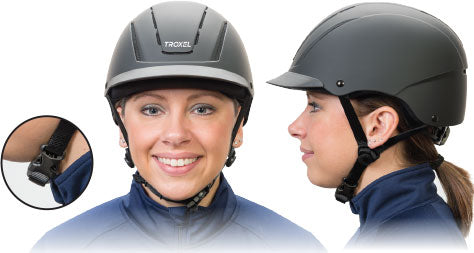 To fine tune the fit, engage the DialFit™ to increase or decrease the inside helmet snugness.
To fine tune the fit, engage the DialFit™ to increase or decrease the inside helmet snugness. - With the helmet level on their head with the visor parallel to the ground. Check the fit and straps and make sure the buckle is locked securely.
-
-
5 Most Common Helmet Myths
-
“Bike or skateboard helmets are fine for riding horses.”
Bike helmets won’t cut it for horse riding. Equestrian helmets are specifically designed and tested for a fall from a horse, and you want to make sure you have the right protection. Bike helmet testing mimics being dropped onto a surface like a curb, but equestrian helmets are put through a test that ensures they’ll protect you if your head hits a rock, fence, or the edge of a barrel. Equestrian helmets also cover a larger area of your head than bike helmets do and have straps that ensure they’ll stay in the right position both on the horse and if you fall.
-
“Horseback riding isn’t dangerous as long as you aren’t riding fast.”
Actually, the risk of injury is more closely tied to your distance above the ground, not speed. Falls from only over two feet high can cause serious injury.
-
“Really good helmets are expensive.”
You can spend $500 on a helmet, but it won’t make it any safer. As long as it’s ASTM/SEI-certified, you’re buying a certified protective helmet. Spending more might get you different padding, fancier decorations or materials, but it doesn’t translate into more protection.
-
“If you don’t have a helmet, just borrow a friend’s.”
Your helmet needs to fit YOU - not your friend. Even if your heads look like a similar size, head shape can make a difference. Also you don’t know if a borrowed helmet has been taken care of properly.
-
“You can keep your helmet unless you see a crack in it.”
You need to replace your helmet if you’re ever in a fall. Even if you can't see damage, if you fall on that same part of the helmet again, you won’t have the protection that you should. And even if your helmet never takes a hit, it’s a good idea to replace it at least every five years (or sooner if you ride often), just because the helmet material can take a beating from all the sweat, heat, dust, and rain.
-
“Bike or skateboard helmets are fine for riding horses.”
Kids Helmet Styles
-
-
From $ 57.99Unit price /Unavailable
-
$ 84.99Unit price /Unavailable
-
$ 89.99
$ 125.99Unit price /Unavailable

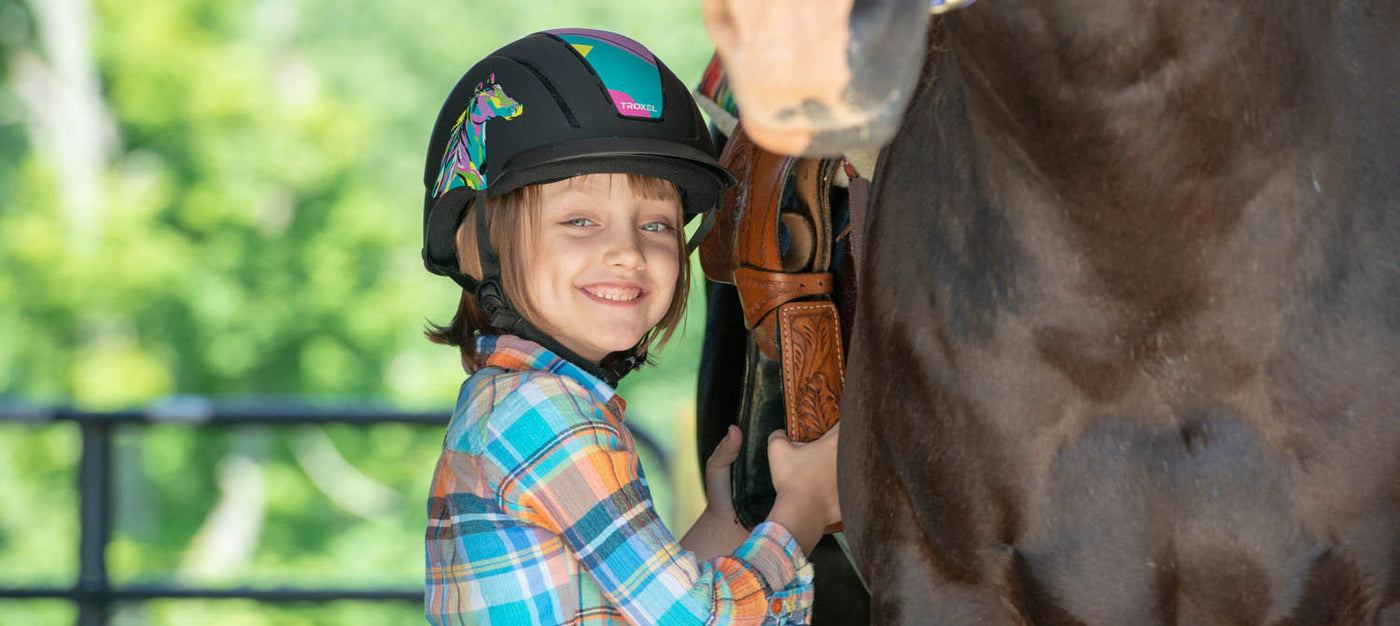
 To fine tune the fit, engage the DialFit™ to increase or decrease the inside helmet snugness.
To fine tune the fit, engage the DialFit™ to increase or decrease the inside helmet snugness.